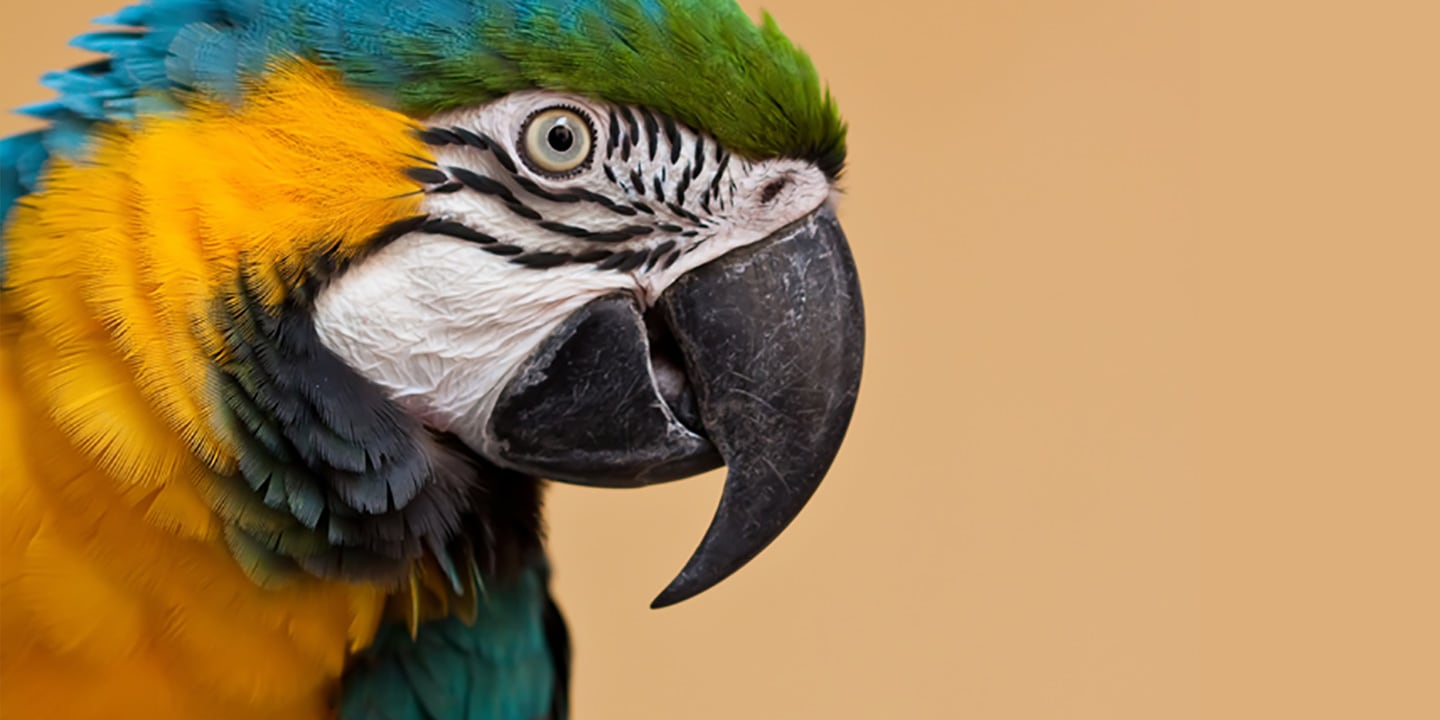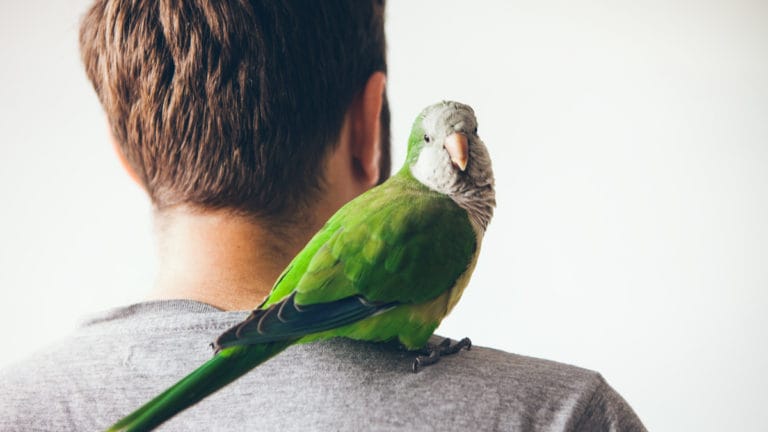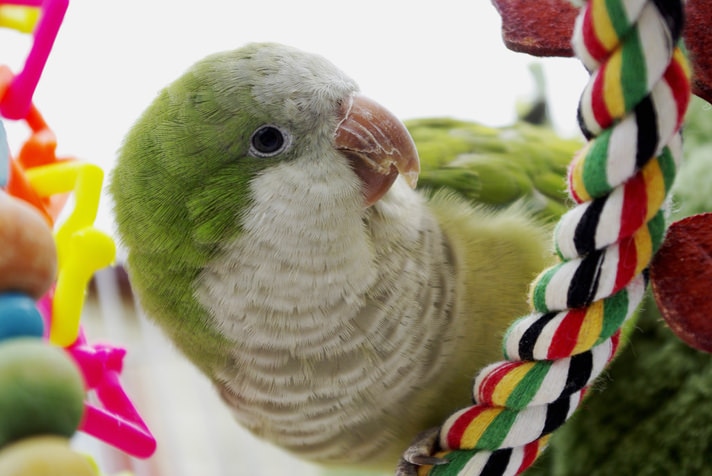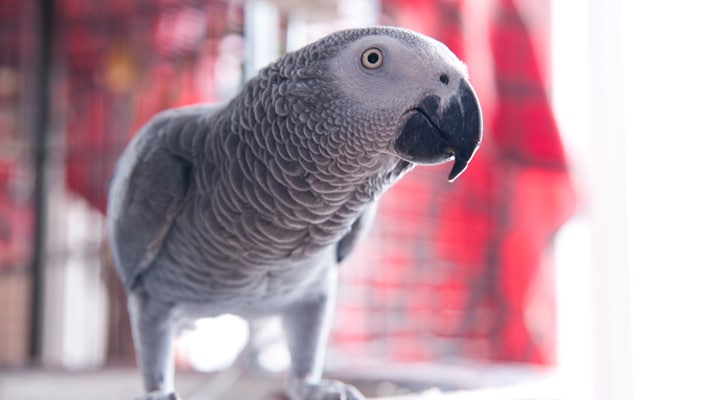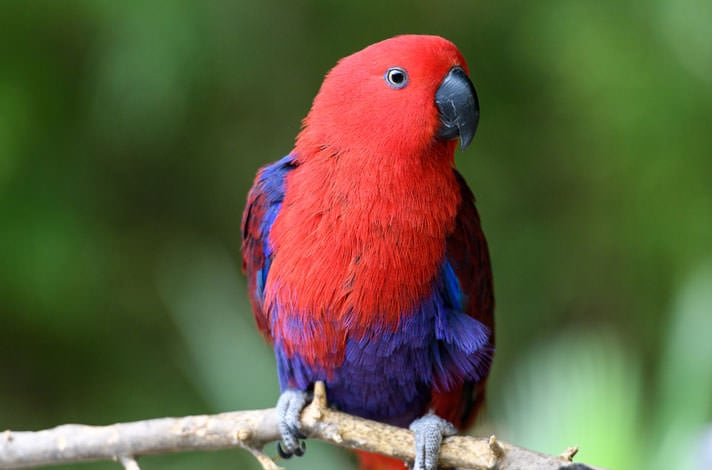1. What kind of macaw parrot do I have?
The 17 species of macaw parrots range in size from 40-inch-tall hyacinth macaw to the 12-inch-tall red-shouldered macaw. Along with the hyacinth macaw (Anodorhynchus hyacintinus), the larger macaws include the:
- Blue-and-gold macaw (Ara ararauna)
- Blue-throated macaw (Ara glaucogularis)
- Scarlet macaw (Ara macao)
- Green-winged macaw (Ara chloroptera)
- Military macaw (Ara militaris)
- Red-fronted macaw
Great green macaw, also known as the Buffon macaw (Ara ambiguous). Smaller macaws make up the group known as mini-macaws, and include the:
- Severe macaw (A. severus)
- Yellow-collared macaw (Primolius auricollis)
- Hahn’s macaw (Diopsittaca nobilis)
- Illiger’s macaw (P. maracana)
- Noble macaw (Diospittaca nobilis cumanensis)
- Red-bellied macaw (Orthopsittaca manilata)
There are also a group of macaws, known as the hybrid macaws. These macaws are offspring of two macaw species (e.g., the catalina macaw is the offspring of the scarlet macaw and blue-and-gold macaw.) There is a lot of controversy surrounding hybrid macaws. Many aviculturists believe that with so many parrots that are endangered, preserving bloodlines and genetics is crucial to the species’ survival. Breeding hybrid macaws can undermine the bloodline and genetics of a species. Hybrid macaws are no different from other macaws as pets. Hybrid macaws include:
- Miligold macaw
- Ruby macaw
- Shamrock macaw
- Bluffon’s macaw
- Calico macaw
- Catalina macaw
- Camelot macaw
- Harlequin macaw
2. What should my macaw parrot eat?
Larger parrots, such as macaws, require more protein in their diet. Pet macaws should be fed parrot bird food that contains large amount of foods rich in beta carotene, the precursor to Vitamin A. These foods include sweet potatoes, carrots, peppers, kale and any other orange or dark green leafy vegetables. In the wild, macaw parrots forage for seeds and nuts in trees. Their active lifestyle in the wild accounts for the high-calorie food need, so fewer nuts are needed in the home. You can still feed a few nuts in-shell for a treat or foraging activity.
3. What kind of bird cage should I get for my macaw parrot?
As with any pet bird, buy the biggest bird cage possible that you can accommodate and afford for your macaw. Macaw parrots, as the largest parrot species, need super-sized bird cages. Start with the minimum of 2 1/2 feet wide by 4 feet deep by 5 feet tall. Bigger pet bird cages will allow for more exercise and, consequently, a healthier macaw. Big macaw parrot beaks mean tough material is necessary to prevent pet bird cage destruction or break-outs.
4. Is my macaw parrot male or female?
Only testing can say for certain whether your pet macaw parrot is a male or female. You can choose DNA testing — using a few feathers, the shell of the egg from which your bird hatched, or a drop of blood — or you may opt for surgical sexing. This can identify gender as well as any sexual defects, but it is a more invasive process than DNA sexing. Speak to your avian veterinarian before moving forward with either procedure.
5. Do macaw parrots talk?
Yes, many macaw parrots mimic human speech. Some macaw parrots, like the blue-and-gold macaw, are known to learn phrases more easily than others. All macaws, however, will want to vocalize by mimicking whistles and household noises or by speaking words. Try simple training tricks to get your pet macaw talking. Start with the food in your pet macaw’s cage and teach it the difference between banana, apple and orange or between seed and nut. When you greet your macaw parrot say “Hello,” and say “Goodbye” when you leave. Connecting phrases to familiar items or actions will help your macaw learn faster.
6. What’s the best way to train my macaw parrot?
Macaw parrots are intelligent birds that can learn behaviors and tricks. Experts recommend watching your pet macaw parrot and noticing what motions and behaviors it exhibits on its own. Work with these movements and incorporate them into tricks by introducing cues and offering rewards. For example, a macaw parrot that often lifts its foot would be a good candidate to learn the wave or shaking hands, and one that likes to bob its head up and down could be encouraged to “Nod Yes.” When you see your pet parrot do this, say, “Nod your head yes,” and hand it a treat or offer a head scratch. Eventually, the simple cue “Nod Yes” can prompt the macaw to move its head up and down to get the reward. Mastering these simple tricks can lead the way to more complex ones.
7. What should I get my pet macaw parrot to keep it happy?
As larger parrots, macaws enjoy using their large beaks to manipulate and shred. Wood toys help these pet birds keep their beaks in good shape. Climbing ropes and hammocks offer lots of fun so do stainless-steel puzzle bird toys and foraging toys. For the pet bird cage, get macaw-appropriate bird perches. Thick, durable woods are necessary for any macaw perch to have an extended life. Big beaks and feet like to chew and climb, so offer multiple perches, including one especially for manipulating and shredding. Of course the best enrichment is lots of playtime with owners.
8. Can macaw parrots contract certain diseases?
Macaws can contract a few common diseases in particular. Aspergillosis is a fungal infection caused by molds. It often results from poor hygiene in the cage or food storage. Macaws infected with this will have labored breathing and some rasping. Psittacosis is also prevalent. This comes from an infection of Chlamydophila, and infected birds don’t always display symptoms.
9. How can I tell if my pet macaw is sick?
Keep an eye on your pet macaw parrot to detect any differences in behavior or habits. If changes happen, without cause, closely watch your bird and take it to your avian veterinarian. A sick macaw might also have poor feathering and slouching posture. Make sure your bird’s eyes and nares are clear and unswollen.
10. What behaviorial problems can macaw parrots have?
Many experts say that macaw are more even-tempered than other parrot species. Some attribute it to the macaw’s size, saying they won’t overreact to little things the way smaller species will. Behavior problems can arise, however, if macaw parrots receive insufficient attention. Give macaws ample interaction and out-of-cage time to avoid feather destructive behavior and excessive screaming. Offer wood toys to chew so your macaw doesn’t chew inappropriate items in your house (or at least deflect it from!). If your pet macaw parrot begins to exhibit unwanted aggression, try retraining it with neutral room techniques.
Posted by: Chewy Editorial
Featured Image: SHAWSHANK61/iStock/Thinkstock
Share:
